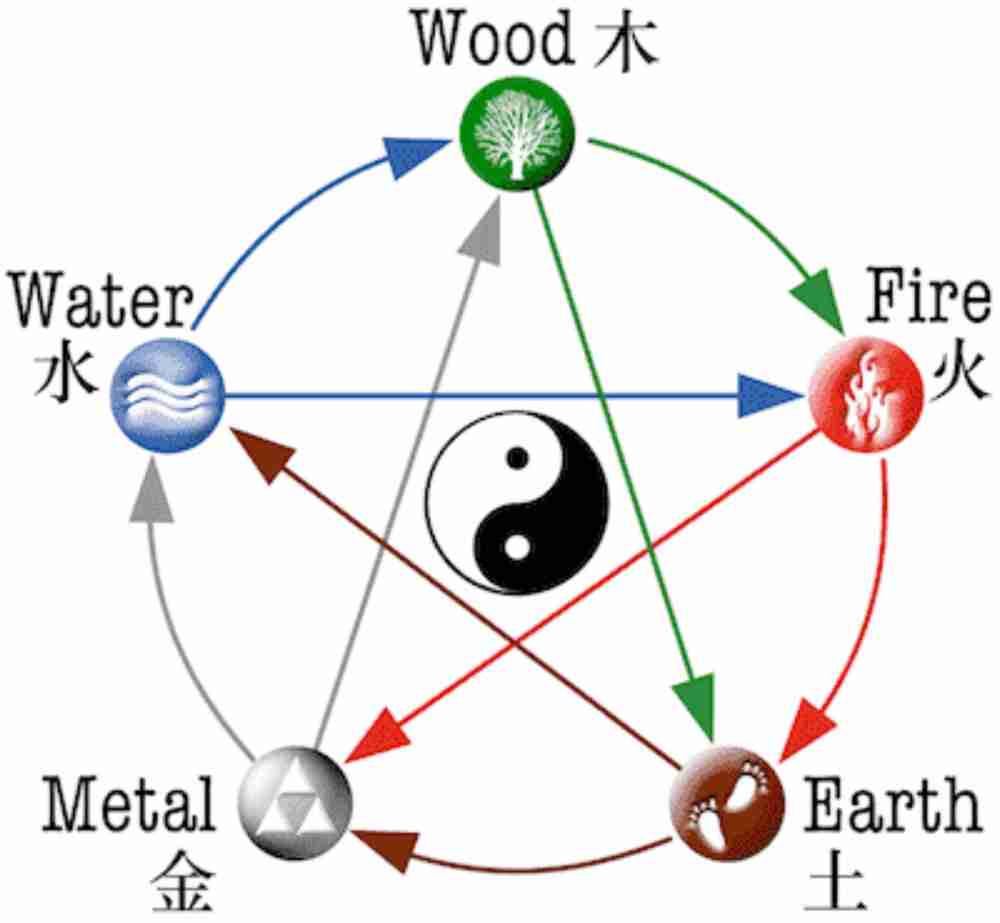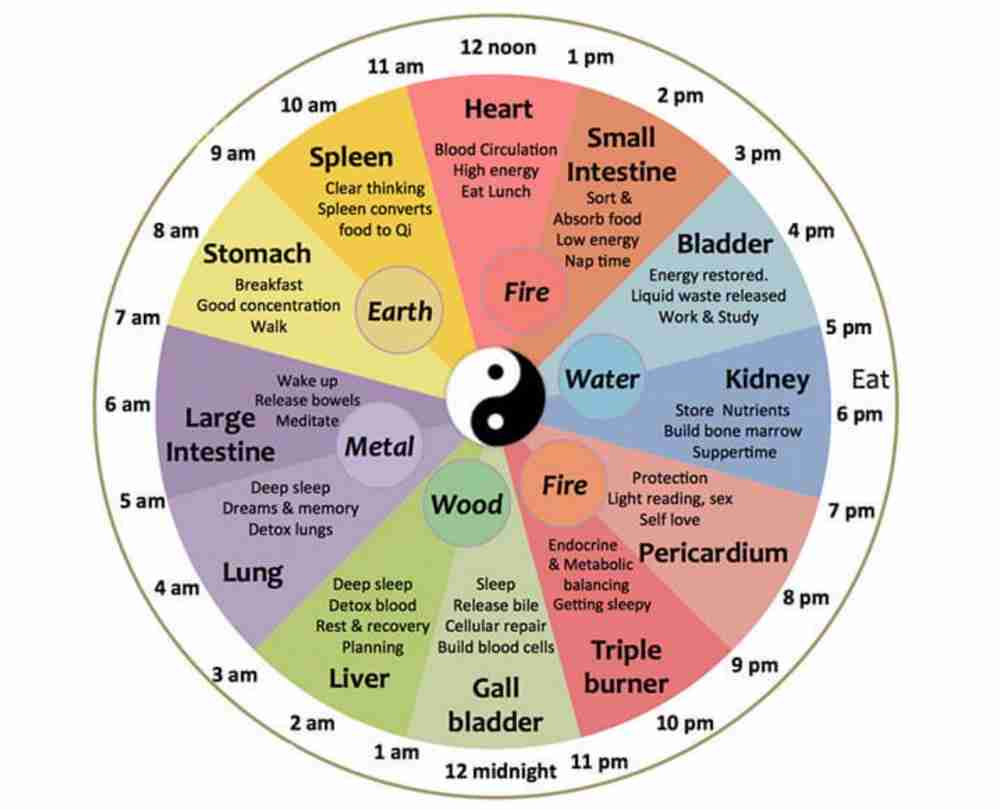Chinese cosmology attempts to explain various changes, oppositions, and transformations in life, and these serve as the natural explanations of the underlying cosmic harmony and balance that the Chinese people believe in. One of the most intriguing natural expressions of balance according to Chinese cosmology is Wuxing, which we will extensively discuss in this article.
5 Elements (Wuxing) Meaning
Wuxing, which directly translates to 5 elements or 5 phases, is an ancient Chinese philosophy that is used to explain a wide array of phenomena, including the succession of political regimes and political engagements in ancient China, cosmic cycles, properties of various medicinal drugs, natural occurences, and various interactions between internal organs in the human body. According to Wuxing, there are 5 main Chinese elements, which are: water, fire, wood, earth, and metal. Each one of these elements are somehow related to each other and they are correlated to the yin and yang energies.
Chinese 5 Elements Personality
The Chinese generally believe that people can be categorized in regard to the five-element theory. To understand tendencies, emotions, body structure, temperaments, illnesses, moods, and either positive and negative behavior, therefore, the Chinese check with the Wuxing (the 5 elements). Along with that, there is the notion around China that human beings are a great part of the universe and are in touch with the various seasons, nature, and the earth, which explains why we are a manifestation of each one of the elements. What differentiates human beings, therefore, is which of the elements under Wuxing is more dominant than another. According to Traditional Chinese Medicine, the personalities as far as the 5 elements are concerned are as follows:
| Personality Type | Description |
| Water Personality Type | Individuals under this personality prefer to flow through life smoothly. They are known to be creative and are often on the quest for knowledge and understanding. Along with that, they are also known to have a calm aura, however, they tend to isolate from the world. |
| Wood Personality Type | Individuals with this personality type are often action-oriented and they tend to drive positive change in all settings that they find themselves in. They are known to be great thinkers and are constantly in the pursuit of challenging opportunities that help them grow. However, they are known to get angry easily and they tend to shout at times. |
| Fire Personality Type | Individuals under this category are often free spirits and are defined as adrenaline junkies! They are pretty good at communicating because they are naturally warm, caring and pretty affectionate. On the negative side, they are emotionally vulnerable due to their over-trusting traits. |
| Metal Personality Type | Individuals of this personality type are more inclined towards discipline, structure and definition. They often leave according to principles and reason, hence seek to only do meaningful work and living authentically. Sometimes, their perfectionism can be a challenge when it comes to engagement. |
| Earth Personality Type | Individuals under this category seek continuous harmony, value loyalty and are inclined towards togetherness in all social settings. They are extremely reliable and dependable, and are often known as the caretakers and peacemakers in society. They find fulfilment in being servant leaders and are known to be very kind. However, they tend to forget that they need to put themselves first. |
Chinese 5 Elements Organs
Before the modern anatomical system was developed in China, traditional Chinese Medicine had already played a key role in establishing the human organic system according to the five elements. This categorization dates back to China’s Warring States Period, which was between 770 and 221 BC and it was documented in the book of Huangdi Neijing, who was popularly known as the Yellow Emperor. Traditional Chinese Medicine divides the human body into 5 critical organs, which are the Liver, the Heart, the Pancreas which includes the Spleen, the Lung and the Kidney. These human organs are in tune with the 5 elements, which are wood, fire, earth, metal, and water.
| Body Organ | Corresponding Element | Function |
| Liver | Wood | The liver is known to supply energy from amino acids, glucose and fatty acids to the rest of the body. |
| Heart | Fire | TCM ties the role of the heart, which is to circulate blood, oxygen and nutrients to the body, to the impression of flames. |
| Pancreas + Spleen | Earth | The pancreas is known to produce insulin, allowing body cells to easily absorb glucose as an energy source for the body. This particular function is said to be similar to the nourishment that the earth gives crops. |
| Lung | Metal | The lungs facilitate the exchange of air (oxygen and carbon dioxide), which is almost similar to what happens to metals (oxidation processes). |
| Kidney | Water | The kidney actively filters waste from the body and produces urine. Because it has a water-type attribute that is somewhat reminiscent of how rivers flow, it is directly connected to water. |
Chinese 5 Elements Chart


Chinese 5 Elements Colors
Feng Shui, a traditional practice that originated from ancient China is directly related to the 5 Elements (Wuxing), in terms of color. Feng Shui simply guides the Chinese on how to pair colors within a particular setting in order to achieve harmony. The Chinese believe that the five elements colors play a critical role in determining negative and positive energy within a room. That means that the colors we tend to work around play a role in determining our general productivity levels, the outcome of our relationships and our overall wellbeing. That being said, it is important to consider the harmonious pairing of the 5 elements when making most decisions pertaining to color. The table below gives a breakdown of the 5 elements, the colors they represent, and what the colors mean according to the Chinese and the practice of Feng Shui.
| Wuxing Elements | Colors Represented | Commentary |
| Wood | Green | Green is associated with life and nature and it symbolizes growth, vegetation, ecology and the balance found in nature. It is often used to create a balance within a room or an environment that is filled with peace. |
| Fire | Red | Red is associated with energy, strength and passion. While it can express gender, it also reflects a heightened degree of spontaneity and a fierce aura. It plays a critical aura in raising motivation levels, boosting one’s confidence and in realigning energy levels. |
| Earth | Yellow or Brown | According to the Chinese, yellow is associated with bubbly feelings such as happiness, joy, and abundance. It is considered a mood booster and a color used to create an aura of thinking and curiosity. |
| Metal | White or Silver | White is associated with pure feelings such as innocence, faith, and purity. It plays a role in raising energies within a room and in creating the best possible feeling around a home. |
| Water | Blue | Blue is the color of water and is often associated with the winter season. It creates a calm and serious aura when used in house settings, hallways and even exterior environments. |
5 Elements History/ Who created Wuxing?
According to historical records and other Chinese literary works, the Five Elements Theory first appeared during the Spring and Autumn Period (770-476 BC). It was introduced into ancient China in 3rd century BCE by Zou Yan – the sage-alchemist. The systemic cosmological theory then ended up dominating the intellectual world of the Han Dynasty which reigned between 206 BCE and 220 CE. As time went by, the Five Elements Theory became even more widespread, and it was even used in Chinese philosophy, traditional Chinese Medicine, in Martial Arts, Feng Shui, and Fortune Telling. Towards the end of the Warring States period, the theory of the 5 elements was elevated and integrated into culture to become the primary system for categorizing the various classification systems that existed at the time.
What are the 5 elements in order?
According to Chinese astrology, cosmology and traditional medicine, the 5 elements are arranged in a cosmological sequence, which denotes a unique order. In this cosmological sequence, Fire is found at the top then water is found at the bottom. Metal, on the other hand, is found on the right side and wood is located on the left side. Lastly, Earth is found at the center of the cosmological sequence.
What is my Chinese element/ How to calculate Chinese 5 elements?
Your Chinese element is determined by the year which you were born, which means that it is relatively easy to find your Chinese element. All you need to do is to look at the last number found in your birth year, then match it to the key elements that are listed for that particular number. In addition to that, the Chinese zodiac is comprised of a 12-year cycle of animal signs that are often based on your year of birth. According to Chinese astrology, each zodiac sign in the 12-year cycle is directly connected with every one of the 5 Chinese elements. Supposedly, the unique association between the zodiac animals and the 5 elements is known as the ‘lucky element’ and it differs from person to person.
| Number | Element Represented | Chinese Zodiac Animal Represented |
| 0 or 1 | Metal | Monkey and Rooster |
| 2 or 3 | Water | Pig and Rat |
| 4 or 5 | Wood | Tiger and Rabbit |
| 6 or 7 | Fire | Snake and Horse |
| 8 or 9 | Earth | Ox, Goat, Dog, and Dragon |
Final Thoughts
The theory of 5 elements, ‘Wuxing’ has played a significant role in Chinese civilization and is considered to have influenced Chinese thinking, engagement with various aspects of life and even relationships. Back then, they formed a basis for the imperial ideology and ancient leaders used it to explain dynamics in society.
